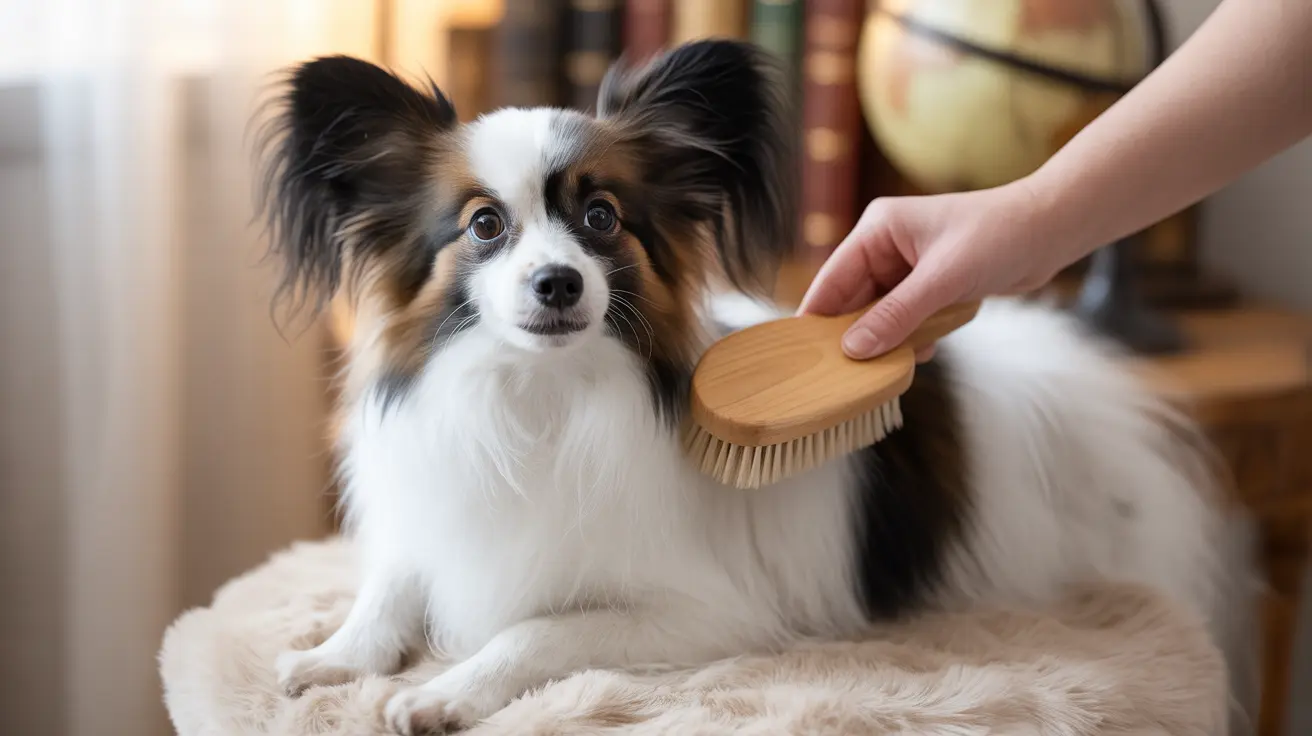Considering adding a Papillon to your family? One of the most common questions potential owners ask is about their shedding habits. While these elegant butterfly-eared dogs are known for their stunning silky coats, understanding their shedding patterns is crucial for proper care and maintenance.
In this comprehensive guide, we'll explore everything you need to know about Papillon shedding, including how much they actually shed, factors that influence their hair loss, and essential grooming tips to keep their beautiful coats healthy.
Understanding Papillon Coat Type and Shedding Patterns
Papillons have a distinctive single-layered coat that sets them apart from many other breeds. Unlike double-coated dogs, they don't have a thick undercoat, which generally results in less overall shedding. Their fine, silky fur is long and flowing, particularly around their ears, chest, and tail.
These small dogs are considered light to moderate shedders throughout the year. While they do shed continuously, the amount is typically manageable with regular grooming routines.
Seasonal Shedding Changes
Like most dogs, Papillons experience some seasonal shedding variations. You may notice slightly increased shedding during spring and fall as they adjust to temperature changes. However, these seasonal shifts are less dramatic than in double-coated breeds.
During the transition from puppy to adult coat, usually around 7-8 months of age, Papillons may experience a period of heavier shedding. This phase typically resolves by 12-15 months when their adult coat is fully established.
Essential Grooming Requirements
To manage shedding effectively, Papillons need regular grooming attention:
- Brush 2-3 times weekly with a pin brush or soft-bristle brush
- Increase brushing frequency during seasonal shedding periods
- Bathe every 4-6 weeks using a gentle dog shampoo
- Pay special attention to areas prone to tangling, like behind the ears and leg feathering
Factors That Affect Shedding
Diet and Nutrition
A balanced diet rich in essential nutrients plays a crucial role in maintaining healthy coat condition and normal shedding patterns. Poor nutrition can lead to excessive shedding and brittle fur.
Health Conditions
Various health issues can impact shedding, including:
- Skin allergies and infections
- Hormonal imbalances
- Stress or anxiety
- Parasitic infections
Environmental Factors
Living conditions and climate can influence shedding patterns. Indoor Papillons may shed more consistently throughout the year due to artificial lighting and temperature control.
Tips for Managing Papillon Shedding
Here are practical strategies to keep shedding under control:
- Maintain a consistent grooming schedule
- Use appropriate grooming tools designed for fine hair
- Invest in a quality pet vacuum
- Consider using pet wipes between baths
- Monitor for any unusual changes in shedding patterns
Frequently Asked Questions
How much do Papillons shed compared to other small dog breeds?
Papillons are light to moderate shedders compared to other small breeds. They shed less than double-coated breeds like Pomeranians but more than non-shedding breeds like Maltese.
What causes seasonal increases in shedding for Papillons, and how can I manage it?
Seasonal temperature changes primarily trigger increased shedding in spring and fall. Manage it through more frequent brushing and maintaining consistent indoor temperatures.
How often should I brush my Papillon to keep shedding under control and prevent mats?
Brush your Papillon 2-3 times weekly during normal periods and daily during seasonal shedding increases. This helps remove loose fur and prevents mat formation.
Can diet or health issues affect the amount my Papillon sheds?
Yes, both diet and health issues can significantly impact shedding. Ensure a balanced diet rich in omega fatty acids and consult a vet if you notice unusual shedding patterns.
Are Papillons hypoallergenic, and how does their shedding impact allergy sufferers?
Papillons are not hypoallergenic. While they shed less than many breeds, they still produce dander that can trigger allergies in sensitive individuals.
Conclusion
While Papillons do shed, their shedding is generally manageable with proper care and attention. By understanding their grooming needs and maintaining a consistent care routine, you can keep their beautiful coats healthy and shedding under control. Remember that individual dogs may vary in their shedding patterns, so adjust your care routine accordingly.






